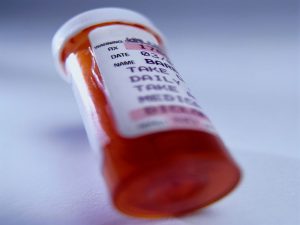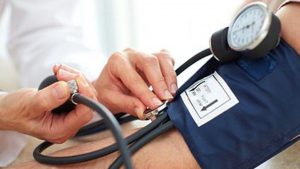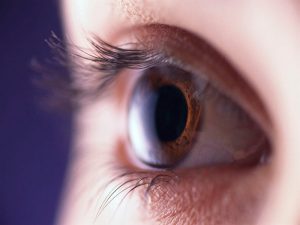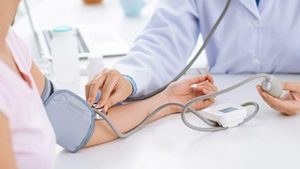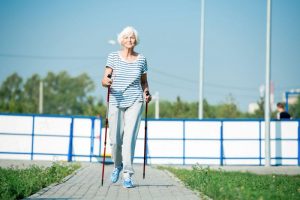(HealthDay News) — Taking your dog or cat on a flight may be no cakewalk, depending on the differing requirements of the airlines and various destinations. That’s why it’s best to research these things before you leave, says the U.S. Centers for Disease Control and Prevention. To reduce travel-related stress for you and your pet, the CDC recommends: Get your pet used to its carrier before the flight. Secure flights with fewer connections and layovers. If your pet is allowed in the cabin, check in as late as possible. Walk your pet before leaving home and again before checking in. Consult your veterinarian.
All Travel:
Don’t Drink and Drive on the Fourth

The Fourth of July holiday is one of the most deadly times on America’s roads, so Mothers Against Drunk Driving (MADD) is urging everyone to avoid drinking and driving. “Celebrating our nation’s independence with backyard barbecues, fireworks displays and other festivities should be fun, not dangerous,” said Bob Garguilo, executive director of MADD Connecticut. “Celebrate safely by designating a non-drinking driver every time plans include alcohol,” Garguilo said in a MADD news release. Police will be setting up sobriety checkpoints during the holiday. These checkpoints allow officers to stop vehicles to check to see if drivers have been drinking. July has more drunk driving deaths than any other month, according to the U.S. National Highway Traffic Safety Administration (NHTSA), and the toll over the July 4 weekend is particularly high. Drunk driving accounts for about 40% of all traffic deaths during July 4 and the weekends before and after. From 6 p.m. Friday, June 30, 2017, to 5:59 a.m. Wednesday, July 5, 2017, 39% of all traffic deaths were alcohol-related, and drunk driving killed 237 people during that time period, according to the NHTSA. Drunk driving is the leading cause of death on U.S. roads, yet is completely preventable, MADD notes. The group urges Americans to take personal responsibility year-round, not just on holidays. If you drink, use taxis, public transportation, rideshare services, or get… read on >
Health Tip: Drive Safely During Rush Hour
(HealthDay News) — Crowded roadways and aggressive drivers help make rush hour a dangerous time to drive, says the National Safety Council. To make it safely during rush hour, the NSC recommends: Slow down. Do not be an impatient driver. Stay in your lane. Beware of drivers that dart from lane to lane. Stay alert. Consult a map or GPS before going to an unfamiliar area. Do not use your phone, or eat or drink while driving.
Bike Lanes Do Help Keep Cyclists Safe

Here’s a finding that should ease the minds of those who ride their bicycles to work: Bike lanes protect them as they pedal to their destination. Researchers found they act as a calming mechanism on traffic, slowing cars and reducing deaths. The researchers analyzed 13 years of data from 12 U.S. cities: Oklahoma City, Memphis, Kansas City, Mo., Dallas, Houston, Austin, Chicago, Denver, Seattle, San Francisco, Minneapolis, and Portland, Ore. “Bicycling seems inherently dangerous on its own,” said study co-author Wesley Marshall, an assistant professor in the College of Engineering, Design and Computing at the University of Colorado Denver. “So it would seem that a city with a lot of bicycling is more dangerous, but the opposite is true. Building safe facilities for cyclists turned out to be one of the biggest factors in road safety for everyone,” Marshall said in a university news release. During the years included in the study, there was a 51% increase in the number of Americans bicycling to work, and the number of protected bike lanes have doubled each year since 2009. At the start of the study, the researchers believed that with more bike lanes and cyclists, drivers would be more likely to slow down and be aware of cyclists, a “safety-in-numbers” effect, so to speak. But they found that improvements in cycling safety aren’t due to a… read on >
Health Tip: ATV Safety
(HealthDay News) — All-terrain vehicles (ATVS) are involved in an estimated 650 deaths and 100,000 accidents each year, says the U.S. Consumer Product Safety Commission (CPSC). To reduce your risk of injury, the CPSC suggests: Do not drive ATVs on paved roads. Do not drive ATVs with a passenger or ride as one. Always wear a helmet and other protective gear. Take a hands-on safety training course. The CPSC also warns that children under 16 should never drive or ride an adult ATV.
Health Tip: Avoid Distracted Driving
(HealthDay News) — Focus is extremely important while driving. Distractions can cause drivers of any skill level to make mistakes, says the American Association of Retired Persons. To avoid distractions behind the wheel, AARP suggests: Secure your cargo. Restrain your pet. Never use your cell phone. Pre-set your favorite radio stations. Refrain from eating, drinking or smoking. Concentrating on anything other than driving raises your risk of an accident.
Crash Risk Much Higher for Teen Drivers With ADHD

Parents often fret when their teen drivers get behind the wheel, but parents of teens with attention-deficit/hyperactivity disorder (ADHD) may now have added worries. A new study found that teens with ADHD are significantly more likely to get into a car crash than their peers. During the first month a teen with ADHD is driving, the risk of an auto accident is 62% higher than for other teens. And over four years, the risk of an alcohol-related crash is roughly two times higher for drivers with ADHD. Teens with ADHD are also more likely to get traffic tickets and engage in risky behaviors, such as not wearing a seatbelt, using electronics behind the wheel and driving too fast, the new research found. “Teen drivers with ADHD are at an elevated risk for motor vehicle crashes, and the risk is particularly elevated in the first month of licensure, regardless of when they got licensed. Parents shouldn’t assume that delaying licensure will lower their teen’s risk,” said study author Allison Curry. She’s a senior scientist at the Center for Injury Research and Prevention at Children’s Hospital of Philadelphia. ADHD is common in childhood and usually persists into adolescence, the study authors said. Symptoms include hyperactive behavior, inattention and impulsivity. Many of the skills needed for driving are impaired in teens with ADHD. The study included nearly 15,000… read on >
Airport Scanners OK for People with Implanted Heart Devices: Study

It appears to be safe for people with implantable heart devices such as pacemakers and defibrillators to go through body scanners at airport security checkpoints, researchers say. Body scanners are becoming increasingly common worldwide. But some people are concerned that they may be a source of electromagnetic interference (EMI) that could disrupt implantable devices used to treat abnormal heart rhythm (arrhythmia). Patients with these devices are advised to limit their exposure to certain technologies, including metal detectors, magnets and MRI scans. The study authors surveyed 1,000 patients with pacemakers, defibrillators and other cardiac implantable electronic devices (CIEDs). Eighty percent expressed concern about passing through airport body scanners. Researchers then analyzed more than 1,000 body scans of people with CIEDs. The scans did not affect functioning of the heart devices, and no CIEDs were detected by the scanners. The study, to be presented this Friday at the Heart Rhythm Society’s annual meeting in San Francisco, is the first to examine body scanners’ impact on CIEDs. Research presented at meetings is typically considered preliminary until published in a peer-reviewed journal. “We were surprised to learn that so many patients expressed concerns about the functionality of their devices while traveling. We wanted to help put their minds at ease by testing the potential interference body scanners could have on common devices like pacemakers and defibrillators,” lead author Dr.… read on >
For People With Autism, Encounters With Police Can Turn Dangerous
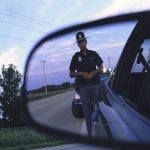
Being stopped and questioned by a police officer can be a stressful encounter for anyone, but it is especially hazardous for those with autism. Things can go so wrong that the person with autism winds up in jail because of miscommunications and misunderstandings. Previous research has found that an estimated 1 in 5 teens with autism will be stopped and questioned by police before age 21. And people with disabilities, including autism, are five times more likely to be jailed than those without disabilities. One child development expert laid out the scenarios that can lead to disaster during a police stop. “A simple traffic stop can have tragic consequences for an individual with ASD [autism spectrum disorder],” said Dr. Andrew Adesman, chief of developmental and behavioral pediatrics at Cohen Children’s Medical Center in New Hyde Park, N.Y. “If a police officer does not recognize that the driver has autism, then they may misinterpret the failure to make eye contact, answer questions appropriately, or follow simple commands,” he explained. “If this happens, the police officer may become more wary and feel defied or threatened — which could then lead to escalation of the situation — with greater agitation or withdrawal by an individual with ASD,” Adesman noted. “Adolescents and adults with autism may respond inappropriately to questions or commands from a police officer or get agitated,… read on >
For Obese People, Commuting by Car Can Be a Killer: Study

Being obese and commuting by car can be a deadly mix, a new study warns. Researchers analyzed data on more than 163,000 adults, aged 37 to 73, in the United Kingdom. The participants were followed for an average of five years. Compared to people of normal weight who walked or cycled to work (active commuters), those who were obese and commuted by car had a 32% higher risk of early death from any cause; twice the risk of dying from heart disease; and a 59% higher risk for non-fatal heart disease. Obesity was defined by the researchers as having a body mass index (BMI) of more than 30. BMI is a measure of body fat based on height and weight. As an example, a person who is 5 feet, 9 inches tall weighing 204 pounds has a BMI of just over 30. The study also found that overall risk of early death among obese people who were active commuters was similar to that for active commuters whose weight was normal. That suggests cycling or walking to work could reduce the harmful effects of obesity. However, the risk of heart disease was still 82% higher for obese active commuters than for normal-weight active commuters, researchers said. “Our findings, if causal, suggest that people with overweight or obesity could potentially decrease the risk of premature mortality if… read on >




















